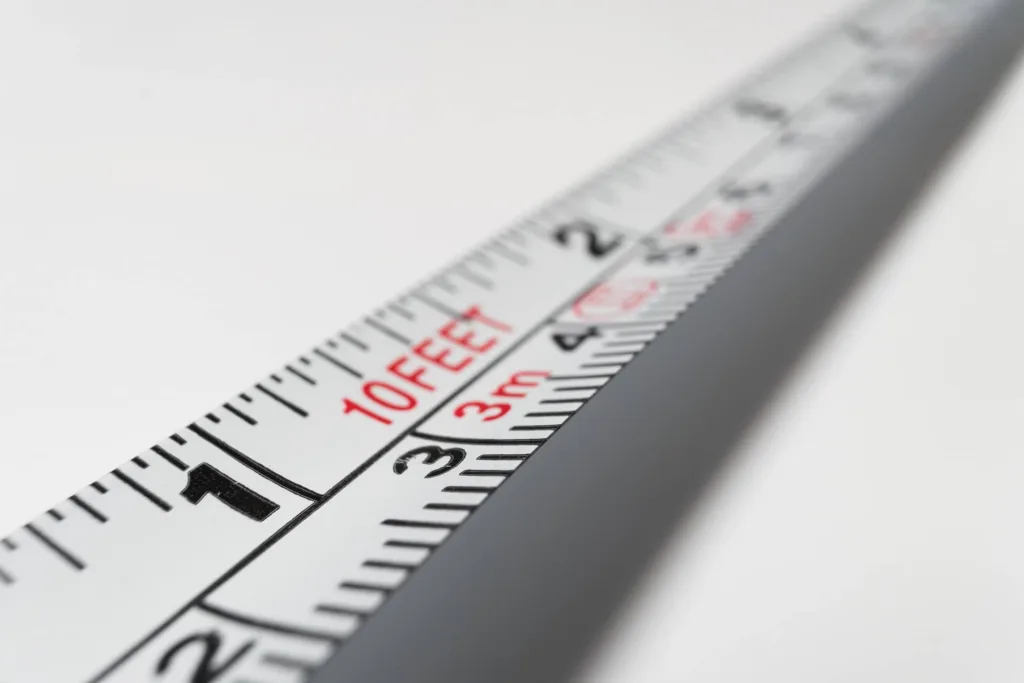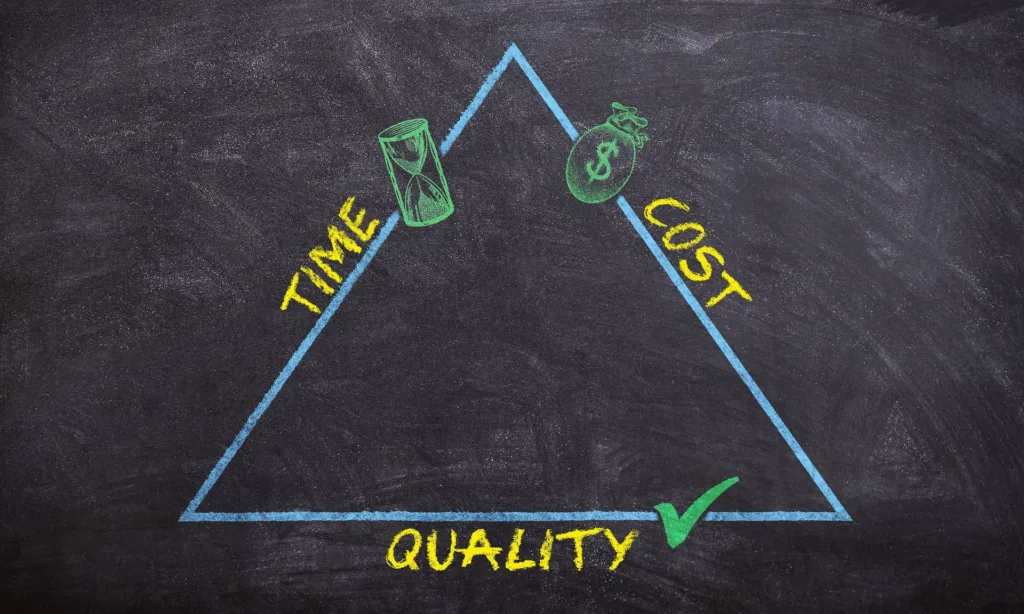Are you dreaming of a lush, green lawn that’s the envy of the neighborhood, but worried about the cost? You’re not alone. Lawn care budgeting is a crucial skill for homeowners who want to maintain a beautiful yard without emptying their wallets. In this comprehensive guide, we’ll explore every aspect of lawn care budgeting, from assessing your lawn’s needs to implementing money-saving strategies. Get ready to transform your outdoor space while keeping your finances in check!
Why Lawn Care Budgeting Matters
A well-maintained lawn isn’t just a feast for the eyes—it’s an investment in your property. Studies show that curb appeal can increase a home’s value by up to 7%. But here’s the catch: achieving that picture-perfect lawn doesn’t have to cost a fortune. That’s where smart lawn care budgeting comes in.
Lawn care budgeting is all about striking a balance between creating a beautiful outdoor space and maintaining financial responsibility. By planning your expenses and making informed decisions, you can enjoy a stunning lawn without the stress of overspending. Throughout this article, we’ll uncover the secrets to efficient lawn care budgeting, helping you save money while nurturing a yard that’ll make your neighbors green with envy.
Assessing Your Lawn’s Needs
Before you can create an effective lawn care budget, you need to understand what your lawn really needs. This process starts with a thorough assessment of your outdoor space.
Soil Testing: The Foundation of Lawn Care
Think of soil testing as a health check-up for your lawn. It’s an essential step that many homeowners overlook, but it can save you hundreds of dollars in the long run. Here’s why:
- Prevents overfeeding: Many people waste money on unnecessary fertilizers. Soil testing tells you exactly what nutrients your lawn needs.
- Identifies pH issues: If your soil’s pH is off, your grass won’t absorb nutrients effectively, no matter how much you fertilize.
- Saves time and money: By targeting your lawn’s specific needs, you avoid wasting resources on ineffective treatments.
You can get a soil testing kit from your local garden center or send a sample to a professional lab for more detailed results. The small cost of a soil test can lead to significant savings in your lawn care budget.
Know Your Grass
Different types of grass have different care requirements. Identifying your grass type is crucial for effective lawn care budgeting. Here’s a quick guide to common grass types and their needs:
| Grass Type | Water Needs | Fertilizer Needs | Mowing Frequency |
|---|---|---|---|
| Kentucky Bluegrass | High | High | Weekly |
| Fescue | Moderate | Moderate | Every 1-2 weeks |
| Bermuda | Low to Moderate | High | Twice weekly |
| Zoysia | Low | Low to Moderate | Every 1-2 weeks |
Measuring Your Lawn

Don’t guess—measure! Knowing the exact size of your lawn is crucial for budgeting. It helps you calculate how much seed, fertilizer, and other products you’ll need, preventing waste and overspending. Here’s a simple method:
- Divide your lawn into rectangles
- Measure the length and width of each rectangle
- Multiply length by width for each section
- Add up the areas of all sections
Remember to account for slopes or uneven terrain, as these can affect product application and maintenance needs.
Breaking Down Lawn Care Costs
Now that you understand your lawn’s needs, let’s dive into the nitty-gritty of lawn care costs. By breaking down expenses into categories, you can create a more accurate and effective budget.
Essential Tools and Equipment
Every lawn care enthusiast needs a basic set of tools. Here’s a list of essentials and their average costs:
- Lawnmower: $150 – $400
- Grass trimmer: $50 – $200
- Rake: $15 – $40
- Garden hose: $20 – $50
- Sprinkler: $20 – $50
- Fertilizer spreader: $30 – $100
Pro tip: Consider buying quality second-hand equipment to save money. Many people sell barely-used lawn care tools at a fraction of their original price.
Recurring Expenses
These are the ongoing costs you’ll need to factor into your lawn care budget:
- Fertilizer: $20 – $80 per application, typically 2-4 times a year
- Grass seed: $30 – $100 annually, depending on lawn size and condition
- Weed control products: $20 – $50 per application, 1-3 times a year
- Water: Varies widely based on location and lawn size, but can be a significant expense
DIY vs. Professional Services
One of the biggest decisions in lawn care budgeting is whether to go DIY or hire professionals. Here’s a cost comparison:
DIY Lawn Care (Annual Costs)
- Equipment: $300 – $800 (one-time investment)
- Materials: $200 – $500
- Your time: 40-80 hours per year
Professional Lawn Care (Annual Costs)
- Basic service: $700 – $2,000
- Premium service: $2,000 – $4,000
While professional services can be more expensive, they may be worth considering if you lack the time or expertise for proper lawn care. However, for budget-conscious homeowners, DIY lawn care can lead to substantial savings over time.
Creating Your Lawn Care Budget

Armed with knowledge about your lawn’s needs and potential costs, it’s time to create your lawn care budget. This process involves careful planning and prioritization to ensure you’re allocating your resources effectively.
Seasonal Planning: What to Spend When
Lawn care needs vary throughout the year. Here’s a general guide to help you plan your seasonal expenses:
Spring (25-30% of annual budget)
- Soil testing
- Fertilization
- Overseeding bare patches
- Weed prevention
Summer (30-35% of annual budget)
- Regular mowing
- Watering
- Pest control
Fall (25-30% of annual budget)
- Fertilization
- Aeration
- Overseeding
Winter (10-15% of annual budget)
- Equipment maintenance
- Planning and budgeting for next year
Prioritizing Tasks: Must-Haves vs. Nice-to-Haves
When budgeting for lawn care, it’s crucial to distinguish between essential tasks and optional enhancements. Here’s a breakdown:
Must-Haves:
- Regular mowing
- Watering (as needed)
- Basic fertilization
- Weed control
Nice-to-Haves:
- Professional landscaping
- Automatic irrigation systems
- Luxury grass varieties
- Extensive flower beds
By focusing on the must-haves first, you ensure that your lawn receives the care it needs while staying within your budget. You can always add nice-to-haves as your budget allows.
Building an Emergency Fund for Unexpected Lawn Issues
Just like you have an emergency fund for household expenses, it’s wise to set aside some money for unexpected lawn issues. Aim to save about 10-15% of your annual lawn care budget for emergencies such as:
- Pest infestations
- Disease outbreaks
- Weather-related damage
- Equipment breakdowns
Having this buffer will help you address unexpected issues promptly without derailing your overall lawn care budget.
Money-Saving Strategies for Lawn Maintenance
Now that we’ve covered the lawn care basics of budgeting, let’s explore some clever strategies to keep your costs down without compromising on the health and beauty of your lawn.
DIY Lawn Care Techniques That Won’t Break the Bank
- Grasscycling: Leave grass clippings on the lawn after mowing. They decompose quickly, returning nutrients to the soil and reducing the need for fertilizer.
- Homemade compost: Create your own nutrient-rich soil amendment using kitchen scraps and yard waste. It’s free and excellent for your lawn’s health.
- Natural weed control: Use vinegar or boiling water to kill weeds in paved areas. For lawn weeds, manual removal is often the most cost-effective method.
- DIY lawn aeration: Instead of renting an aerator, use a garden fork to create holes in your lawn, improving drainage and nutrient absorption.
Smart Watering Practices to Reduce Utility Bills
Water is often one of the biggest expenses in lawn care. Here are some tips to reduce your water usage and costs:
- Water deeply but infrequently: This encourages deep root growth and makes your lawn more drought-resistant.
- Water early in the morning: Less water will evaporate, making your watering more effective.
- Install a rain sensor: This prevents your sprinkler system from running when it’s raining.
- Use mulch: Apply mulch around plants and trees to retain moisture and reduce water needs.
Eco-Friendly Alternatives That Save Cash and the Planet
Adopting eco-friendly lawn care practices isn’t just good for the environment—it can also be great for your wallet. Consider these options:
- Native plants: They’re adapted to your local climate, requiring less water and maintenance.
- Rain barrels: Collect rainwater for use during dry spells, reducing your water bill.
- Manual tools: Opt for push mowers and hand tools when possible to save on fuel and electricity costs.
- Organic fertilizers: While sometimes more expensive upfront, they improve soil health over time, reducing long-term costs.
By implementing these strategies, you can significantly reduce your lawn care expenses while still maintaining a beautiful, healthy yard. Remember, effective lawn care budgeting is about making smart choices that balance cost, effort, and results.
Investing Wisely in Lawn Care Equipment

Making smart decisions about lawn care equipment is crucial for effective budgeting. Let’s explore how to choose between buying and renting, focus on essential tools, and maintain your equipment for longevity.
Buy vs. Rent: Making the Right Choice for Your Needs
Deciding whether to buy or rent lawn care equipment depends on several factors:
- Frequency of use: If you’ll use the equipment more than 3-4 times a year, buying often makes more sense.
- Storage space: Consider if you have room to store larger equipment year-round.
- Maintenance skills: Owning equipment requires regular maintenance. Are you prepared for this?
- Budget: Compare the long-term costs of renting vs. buying.
Here’s a quick guide to help you decide:
| Equipment | Buy | Rent |
|---|---|---|
| Lawnmower | ✓ | |
| Leaf blower | ✓ | |
| Aerator | ✓ | |
| Dethatcher | ✓ | |
| Chainsaw | ✓ |
Quality Over Quantity: Focusing on Essential Tools
When building your lawn care toolkit, prioritize quality over quantity. Invest in high-quality versions of these essential tools:
- Lawnmower
- String trimmer
- Rake
- Pruning shears
- Garden hose with adjustable nozzle
Remember, a well-made tool can last for years, saving you money in the long run. Look for brands known for durability and check customer reviews before purchasing.
Maintenance Tips to Extend the Life of Your Equipment
Proper maintenance can significantly extend the life of your lawn care equipment, saving you money over time. Here are some key maintenance tips:
- Clean after each use: Remove grass clippings and dirt to prevent rust and damage.
- Sharpen blades regularly: Sharp mower blades cut grass cleanly, reducing stress on your lawn and your mower’s engine.
- Change oil and filters: Follow the manufacturer’s recommendations for oil changes and filter replacements.
- Store properly: Keep equipment in a dry, protected area when not in use.
- Winterize equipment: Prepare your tools for winter storage to prevent damage from cold temperatures.
“The bitterness of poor quality remains long after the sweetness of low price is forgotten.”
Benjamin Franklin
This quote rings especially true for lawn care equipment. Investing in quality tools and maintaining them properly can lead to significant savings in your lawn care budget over time.
Fertilizers and Treatments: Budgeting for a Lush Lawn
Fertilizers and treatments are essential for maintaining a healthy, vibrant lawn. However, they can also be a significant expense. Let’s explore how to budget effectively for these crucial lawn care components.
Understanding Fertilizer Schedules and Costs
Fertilizer needs vary depending on your grass type, soil condition, and climate. However, a general fertilizer schedule might look like this:
- Early Spring: Light fertilization to encourage root growth
- Late Spring: Heavier fertilization as grass enters peak growth phase
- Summer: Light fertilization (if needed) to support stress resistance
- Fall: Heavy fertilization to prepare grass for winter dormancy
The cost of fertilizer can range from $20 to $80 per application for an average-sized lawn. To save money:
- Buy in bulk for the entire season
- Look for sales in early spring or late fall
- Consider slow-release fertilizers that last longer
Natural Alternatives to Expensive Chemical Treatments
Chemical treatments can be costly and may have environmental impacts. Consider these natural alternatives:
- Compost tea: Brew your own nutrient-rich liquid fertilizer
- Grass clippings: Leave them on the lawn as a natural nitrogen source
- Coffee grounds: Sprinkle used grounds for a nitrogen boost
- Epsom salt: Use for magnesium-deficient soils
These natural options can significantly reduce your fertilizer costs while promoting a healthier lawn ecosystem.
Bulk Buying and Storage Tips for Long-Term Savings
Buying lawn care products in bulk can lead to substantial savings, but proper storage is crucial. Here are some tips:
- Buy in off-season: Fertilizers and other lawn care products often go on sale in late fall or early winter.
- Store in a cool, dry place: Moisture can degrade fertilizers and cause caking.
- Use airtight containers: Transfer products from bags to sealable plastic containers to prevent moisture absorption.
- Label clearly: Mark purchase dates and expiration dates to ensure you use products while they’re still effective.
By following these strategies, you can maintain a lush lawn without overspending on fertilizers and treatments.
Tackling Common Lawn Problems on a Budget

Every lawn faces challenges, but addressing them doesn’t have to drain your wallet. Let’s explore budget-friendly solutions for common lawn issues.
Weed Control Strategies That Won’t Break the Bank
Weeds can be persistent, but you can keep them at bay without expensive herbicides:
- Manual removal: For small weed infestations, hand-pulling is the most cost-effective method.
- Boiling water: Pour boiling water directly on weeds in paved areas.
- Vinegar solution: Mix vinegar with a little dish soap for a natural weed killer.
- Corn gluten meal: Use as a pre-emergent herbicide to prevent weed seeds from germinating.
Remember, the best weed control is a thick, healthy lawn that outcompetes weeds naturally.
Affordable Solutions for Pest Management
Pests can wreak havoc on your lawn, but chemical pesticides aren’t always necessary:
- Beneficial nematodes: These microscopic worms prey on many lawn pests.
- Diatomaceous earth: This natural powder dehydrates many insect pests.
- Companion planting: Plant pest-repelling plants like marigolds or chrysanthemums.
- Beer traps: Use shallow dishes of beer to attract and drown slugs and snails.
DIY Remedies for Brown Patches and Bare Spots
Brown patches and bare spots can be eyesores, but you can address them affordably:
- Overseed: Spread grass seed over thin or bare areas. Keep the area moist until seeds germinate.
- Top dress: Apply a thin layer of compost to improve soil quality and encourage growth.
- Aerate: Use a garden fork to create holes in compacted areas, improving water and nutrient penetration.
- Adjust mowing height: Mow higher to reduce stress on grass and encourage thicker growth.
By implementing these budget-friendly solutions, you can tackle common lawn problems without overspending. Remember, consistency and patience are key—many lawn issues resolve themselves with proper care over time.
Landscaping on a Shoestring: Adding Value Without High Costs
Creating a beautiful landscape doesn’t have to cost a fortune. With some creativity and strategic planning, you can enhance your yard’s appeal without breaking your lawn care budget.
Low-Cost Plants That Pack a Visual Punch
Choosing the right plants can dramatically improve your landscape without a hefty price tag. Consider these budget-friendly options:
- Black-eyed Susans: Bright, cheerful flowers that bloom all summer
- Hostas: Low-maintenance shade plants with attractive foliage
- Daylilies: Colorful, hardy perennials that multiply over time
- Ornamental grasses: Provide texture and movement with minimal care
- Lavender: Fragrant, drought-resistant, and attractive to pollinators
Pro tip: Check local plant swaps or gardening clubs for free or low-cost plants. Many gardeners are happy to share cuttings or divide their perennials.
Upcycling and Repurposing for Unique Lawn Décor
Get creative with items you already have or can find cheaply to add character to your landscape:
- Old tires: Paint them and use as planters
- Wooden pallets: Create vertical gardens or rustic fencing
- Mason jars: Hang them with tea lights for charming outdoor lighting
- Broken pottery: Use pieces to create mosaic stepping stones
- Fallen branches: Arrange them to create natural borders or garden art
This approach not only saves money but also adds a unique, personal touch to your outdoor space.
Strategic Planning for Long-Term Landscape Development
Developing your landscape over time can help spread out costs while still working towards a cohesive design:
- Start with a master plan: Sketch out your ideal landscape, then break it into manageable phases.
- Focus on hardscaping first: Install paths, patios, and other structural elements before major plantings.
- Plant trees early: They take time to grow, so plant them as soon as possible.
- Use place-holders: Plant fast-growing annuals in areas where you plan to add more expensive perennials later.
- Divide and conquer: As your plants grow, divide them to fill other areas of your garden for free.
Technology and Tools for Lawn Care Budgeting
In today’s digital age, technology can be a powerful ally in your lawn care budgeting efforts. Let’s explore some tools that can help you track expenses, optimize efficiency, and find budget-friendly tips.
Apps and Software for Tracking Lawn Care Expenses
Several apps can help you monitor your lawn care spending:
- Lawn Care Planner: Tracks expenses and schedules tasks
- GreenPal: Helps compare prices for lawn care services
- Mint: General budgeting app that can categorize lawn care expenses
Using these tools can give you a clear picture of where your money is going and help identify areas for potential savings.
Smart Home Devices That Optimize Lawn Care Efficiency
Smart technology can help you maintain your lawn more efficiently, potentially reducing costs:
- Smart sprinkler controllers: Adjust watering based on weather forecasts
- Robotic lawn mowers: Automate mowing, saving time and potentially reducing fuel costs
- Soil moisture sensors: Help prevent overwatering
While these devices may require an upfront investment, they can lead to significant savings over time.
Online Resources for Budget-Friendly Lawn Care Tips
The internet is a treasure trove of lawn care information. Some valuable resources include:
- Extension office websites: Offer region-specific advice and often free soil testing
- YouTube channels: Provide visual guides for DIY lawn care tasks
- Gardening forums: Connect with other enthusiasts for tips and plant exchanges
Remember to cross-reference information from multiple sources to ensure accuracy.
When to Splurge vs. When to Save

Effective lawn care budgeting isn’t just about cutting costs—it’s about spending wisely. Let’s explore when it makes sense to invest more and when you can safely economize.
Identifying Areas Where Quality Matters Most
Some aspects of lawn care benefit significantly from higher-quality products or services:
- Soil amendments: Good soil is the foundation of a healthy lawn
- Grass seed: Quality seed leads to a more robust, disease-resistant lawn
- Core aeration: Professional service can greatly improve soil health
Cost-Benefit Analysis of Professional Services
Sometimes, hiring a pro can save money in the long run. Consider professional help for:
- Tree trimming: Improper pruning can damage expensive trees
- Pest control: Early professional intervention can prevent costly infestations
- Irrigation system installation: Ensures efficient water use
Long-Term Investments That Pay Off in Lawn Care
Some upfront costs can lead to significant savings over time:
- Rainwater harvesting system: Reduces water bills
- High-quality mower: Lasts longer and performs better
- Soil testing kit: Prevents overuse of unnecessary fertilizers
Remember, the goal is to balance immediate costs with long-term benefits to your lawn and your wallet.
Seasonal Lawn Care Budgeting Tips
Each season brings unique lawn care challenges and opportunities. Let’s break down how to budget effectively throughout the year.
Spring: Reviving Your Lawn Without Overspending
Spring is a crucial time for lawn care, but it doesn’t have to be expensive:
- Rake thoroughly: Remove dead grass and thatch for free
- Overseed bare patches: Much cheaper than sodding
- Start composting: Create free, nutrient-rich soil amendment
Summer: Maintaining Beauty During Peak Growing Season
Summer can be tough on lawns and wallets. Here’s how to keep both healthy:
- Mow higher: Promotes deeper roots and reduces watering needs
- Water deeply but infrequently: Encourages drought resistance
- Mulch garden beds: Reduces water evaporation and weed growth
Fall: Preparing for Winter on a Budget
Fall lawn care sets the stage for next year’s growth:
- Leave some leaves: Mulched leaves provide free nutrients
- Fertilize: Fall feeding strengthens roots for winter
- Aerate and overseed: Improves soil health and fills in thin spots
Winter: Off-Season Savings and Planning
Use the winter months to prepare for the coming year:
- Maintain equipment: Clean and repair tools to avoid replacement costs
- Plan your garden: Research and design to avoid impulse purchases in spring
- Stock up on supplies: Look for off-season sales on lawn care products
By tailoring your lawn care activities and budget to each season, you can maintain a beautiful yard year-round without overspending.
Community Resources for Budget-Friendly Lawn Care
Your community can be a valuable resource for affordable lawn care. Let’s explore some options that can help you save money while improving your lawn.
Local Extension Offices and Their Free Services
Extension offices, typically associated with state universities, offer a wealth of free or low-cost resources:
- Soil testing services
- Plant disease diagnosis
- Gardening workshops and classes
- Region-specific lawn care advice
These services can save you money by helping you avoid costly lawn care mistakes and unnecessary treatments.
Neighborhood Tool-Sharing Programs
Many communities have tool-sharing programs that allow members to borrow expensive equipment:
- Tool libraries: Lend out gardening tools for free or a small fee
- Neighborhood cooperatives: Share costs of expensive equipment among members
- Online sharing platforms: Connect with neighbors to borrow or rent tools
These programs can significantly reduce your equipment costs, especially for items you only need occasionally.
Community Gardens and Their Benefits for Homeowners
Even if you’re focusing on your own lawn, community gardens can offer valuable benefits:
- Knowledge sharing: Learn from experienced gardeners
- Bulk buying opportunities: Join group purchases for seeds, soil, and other supplies
- Plant swaps: Exchange plants and cuttings with other gardeners
- Composting facilities: Some community gardens offer composting services
Participating in a community garden can enhance your lawn care skills while reducing costs.
Balancing Aesthetics and Affordability
Creating a beautiful lawn on a budget is all about finding the right balance between appearance and cost. Let’s explore some strategies to achieve this.
Achieving a Magazine-Worthy Lawn on a Real-World Budget
You don’t need unlimited funds to have a stunning lawn. Try these tips:
- Focus on health: A well-maintained lawn naturally looks good
- Create focal points: Invest in a few standout features rather than trying to make everything perfect
- Embrace imperfection: A few weeds or bare spots are normal in a real, lived-in yard
- Use optical illusions: Mow diagonal stripes to make your lawn appear larger and more manicured
Embracing Native Plants for Low-Maintenance Beauty
Native plants are adapted to your local climate, requiring less water, fertilizer, and overall care:
- Research local species: Your extension office can provide a list of native plants
- Start small: Gradually replace high-maintenance areas with native plant gardens
- Create habitats: Native plants attract beneficial insects and birds, adding life to your yard
Creating Focal Points That Maximize Impact with Minimal Expense
Strategic focal points can elevate your entire landscape:
- DIY water features: A simple fountain or bird bath can become a centerpiece
- Statement plants: One or two larger, eye-catching plants can anchor your design
- Creative hardscaping: A well-placed bench or arbor can define spaces inexpensively
- Lighting: Strategic outdoor lighting can create drama and extend enjoyment of your yard
Remember, a beautiful lawn is more about thoughtful design and care than about how much money you spend.
Conclusion: Cultivating a Beautiful Lawn and a Healthy Budget
Mastering lawn care budgeting is a journey, not a destination. It requires ongoing attention, adjustment, and learning. But with the strategies we’ve discussed, you’re well-equipped to create and maintain a beautiful lawn without breaking the bank.
Key takeaways:
- Understand your lawn’s specific needs
- Prioritize essential tasks and investments
- Leverage DIY solutions and natural alternatives
- Use technology and community resources to your advantage
- Balance aesthetics with affordability
Remember, the most important factor when it comes to lawn care for beginners and successful lawn care budgeting is consistency. Small, regular efforts often yield better results than sporadic, expensive interventions.
As you embark on your lawn care budgeting journey, don’t be afraid to experiment and learn from both successes and failures. Every lawn is unique, and what works best for you may take some trial and error to discover.
With patience, creativity, and the knowledge you’ve gained from this guide, you’re ready to cultivate not just a beautiful lawn, but a healthier bank account too. Happy gardening!


